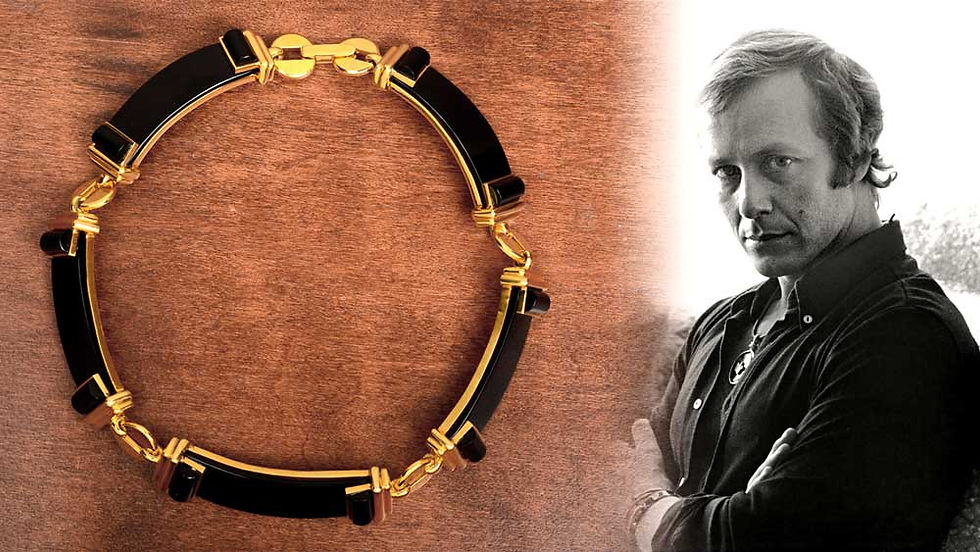When Collecting Becomes an Art: Taylor Swift and the Culture of Iconic Fashion Collectors
- Professor Simon LEUNIG

- 1 day ago
- 4 min read

Collecting is more than just owning things in the world of luxury and art; it's also telling stories. Every item, from a watch to a handbag to a couture gown, tells a story that connects personal identity, legacy, and culture. Taylor Swift is one of the most famous modern collectors. Her growing collection of fine watches has recently caught the attention of both fans and watch lovers. Swift's collection includes pieces from Cartier, Bulgari, and Audemars Piguet. It's not just a sign of celebrity excess; it's also a carefully curated collection of style, symbolism, and self-expression.
What a Collector Means
A collector is more than just someone who collects things; they are also someone who keeps history alive and lends meaning to things. Collecting becomes an emotional and intellectual activity, a way to capture moments, craft, and even changes in society. Collecting items like Andy Warhol's vintage watches and Elizabeth Taylor's renowned jewellery collection is a way for people to preserve their cultural heritage, a responsibility that collectors undertake with great appreciation. "I don't wear a watch to tell the time; I wear it to tell a story," Warhol once said.
The Strength of Provenance: When Ownership Adds Value
In high-end markets, the value of an item is determined as much by its origin as by its craftsmanship. For example, the story of the Paul Newman Rolex Daytona remains one of the most iconic in the history of collecting. The watch, which belonged to a famous Hollywood actor, sold for more than $17.8 million at Phillips in 2017. It is one of the most expensive wristwatches ever sold. It wasn't just the Rolex name or the fact that the model was rare that made it priceless; it was the combination of both that made it priceless. It was the story of Newman himself: the race car driver, actor, and philanthropist whose charm still tickles the chronograph.
Similarly, Jane Birkin's well-worn Hermès Birkin bag became a global icon not just because of its appearance, but also because of her story. The bag, which she acquired from Jean-Louis Dumas, the then-CEO of Hermès, has become a symbol of effortless Parisian style and remains the subject of debates about status, scarcity, and sustainability. In 2024, vintage Birkins linked to Birkin herself sold for more than $200,000 at Christie's. This shows that sentiment and story often matter more than the stitching. Modern Collectors: From Watches to Wardrobes
There are both traditional collectors and pop culture icons in today's generation of collectors. These people are changing what it means to appreciate art and fashion. Rihanna's old Fenty pieces, Kim Kardashian's old Mugler and Dolce & Gabbana gowns, and Pharrell Williams's collection of Tiffany & Co. jewellery and Richard Mille watches show how cultural influence and investment foresight can come together. Jay-Z's Patek Philippe Nautilus 5711 and Beyoncé's diamond-set Hublot Big Bang are two examples of how watches have become both status symbols and emotional symbols.
The trend goes beyond famous people. Collectors like John Mayer, who is known for his refined taste in Rolex, Patek Philippe, and Audemars Piguet, are changing the way people talk about watches by teaching and influencing others. Naomi Campbell and Anna Wintour have also compiled personal fashion archives that showcase how styles have evolved, with each piece marking a significant step in their creative journeys. These renowned collectors are not only preserving the past but also shaping the future of fashion, inspiring us all with their vision and influence.
When Time and Fashion Meet
People who aren't rich or famous can now wear luxury watches. In 2025, high-end fashion brands like Chanel, Gucci, and Louis Vuitton will be combining watches with high fashion. Chanel's Première Édition Originale and Louis Vuitton's Tambour Twenty are two examples of how fashion houses turn watches into wearable art. These collections appeal to people like Swift, who view watches as both works of art and investments, a blend of emotional connection and deliberate curation.
Collecting's Cultural Future
The concept of collecting in fashion is evolving rapidly. Digital heritage and blockchain authentication have also made it possible to own rare digital items. NFT fashion collectibles and metaverse wearables are two examples of this. Like Taylor Swift changes the way musicians own their music, collectors today change the way people can "own" a piece of fashion history, both in real life and online. Collecting is no longer just about luxury. It's a way of saying, "I was here and this is what I valued." It's about identity, legacy, and the art of storytelling.
From Collectors to Curators: Where Learning and Work Meet
Students at Raffles' Fashion Marketing and Management program don't just learn about luxury branding; they live it. They learn about consumer psychology, brand heritage, and the economic forces behind collectibles, from Hermès to Hublot, through curated industry collaborations, fashion exhibitions, and event marketing projects. The program prepares future fashion leaders to lead both creative and business activities, bringing together art, fashion, and storytelling.
Professor Simon LEUNIG
President, Raffles Kuala Lumpur, Malaysia
References
Beck, R. (2024). Taylor Swift Is Building a Formidable Watch Collection. These Are the “Life of a Showgirl” Singer’s Best. Esquire UK. Retrieved from https://www.esquire.com/uk/watches/g68810745/taylor-swift-watch-collection/
Getty, & Louis Vuitton. (2024). Taylor Swift wears Louis Vuitton Tambour watch. GQ Magazine UK. Retrieved from https://www.gq-magazine.co.uk/article/taylor-swift-louis-vuitton-tambour-2024
Phillips Auction. (2017). Rolex “Paul Newman” Daytona Sells for $17.8 Million. Retrieved from https://www.phillips.com
Christie’s. (2024). Handbags & Accessories: The Birkin Legacy. Retrieved from https://www.christies.com
Vogue. (2025). Inside the World of Celebrity Collectors: From Watches to Wardrobes. Vogue International. Retrieved from https://www.vogue.com
Wintour, A. (2025). Fashion Archives as Cultural Heritage. The Business of Fashion. Retrieved from https://www.businessoffashion.com













Very Insightful ❤️
Very insightful👍🏻
Thank You for sharing this insightful article, Prof Simon 👍
Very Interesting
👍🏽